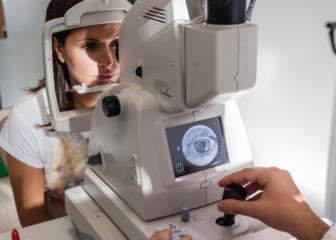Summary
Please enable javascript to play this video.
| Quick Facts: Optometrists | |
|---|---|
|
$134,830 per year
$64.82 per hour |
|
| Doctoral or professional degree | |
| None | |
| None | |
| 47,800 | |
| 8% (Much faster than average) | |
| 3,800 | |
What Optometrists Do
Optometrists diagnose, manage, and treat conditions and diseases of the human eye and visual system, including examining eyes and prescribing corrective lenses.
Work Environment
Most optometrists work in offices or in optical goods stores. Optometrists usually work full time, but part-time work is common. Schedules may vary to include evenings and weekends.
How to Become an Optometrist
Optometrists typically need a Doctor of Optometry (O.D.) degree, which take 4 years of graduate-level study to complete. Every state requires optometrists to be licensed.
Pay
The median annual wage for optometrists was $134,830 in May 2024.
Job Outlook
Employment of optometrists is projected to grow 8 percent from 2024 to 2034, much faster than the average for all occupations.
About 2,400 openings for optometrists are projected each year, on average, over the decade. Many of those openings are expected to result from the need to replace workers who transfer to different occupations or exit the labor force, such as to retire.
State & Area Data
Explore resources for employment and wages by state and area for optometrists.
Similar Occupations
Compare the job duties, education, job growth, and pay of optometrists with similar occupations.
More Information, Including Links to O*NET
Learn more about optometrists by visiting additional resources, including O*NET, a source on key characteristics of workers and occupations.
 United States Department of Labor
United States Department of Labor










